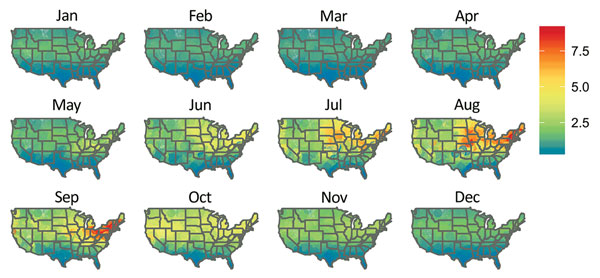Volume 23, Number 11—November 2017
Research
Weather-Dependent Risk for Legionnaires’ Disease, United States
Figure 4

Figure 4. Predicted probability of an inpatient hospitalization for bacterial pneumonia being coded as Legionnaires’ disease, all US states, 2011. The predicted risk is for a 61–70-year-old white man on Medicare (the most common patient in the pooled case–control sample) by location for each month in 2011. These fixed covariates and actual monthly temperature, relative humidity, and latitude for each weather station in the Integrated Surface Database dataset were used to produce estimated probabilities using the model described in Table 4.
Page created: October 16, 2017
Page updated: October 16, 2017
Page reviewed: October 16, 2017
The conclusions, findings, and opinions expressed by authors contributing to this journal do not necessarily reflect the official position of the U.S. Department of Health and Human Services, the Public Health Service, the Centers for Disease Control and Prevention, or the authors' affiliated institutions. Use of trade names is for identification only and does not imply endorsement by any of the groups named above.